

Meta Learning in AI
Meta-learning more profoundly termed as “learning to learn” constitutes the new offshoot of artificial intelligence and relates to the establishment of improved learning methodologies for models relying on data. That is, it builds models that are not specific or specifically built for any one task but what it wants is to improve the model in generalization and maintain it with the option of modification based on past experiences. Therefore, the approach allows the engineers to increase the rate of training for AI systems by using the collected data from previous tasks to train the new tasks. For instance, train a meta-learning model on various forms of data so that you can recognize patterns inherent in those forms and then apply that to new tasks with as little new data as possible.
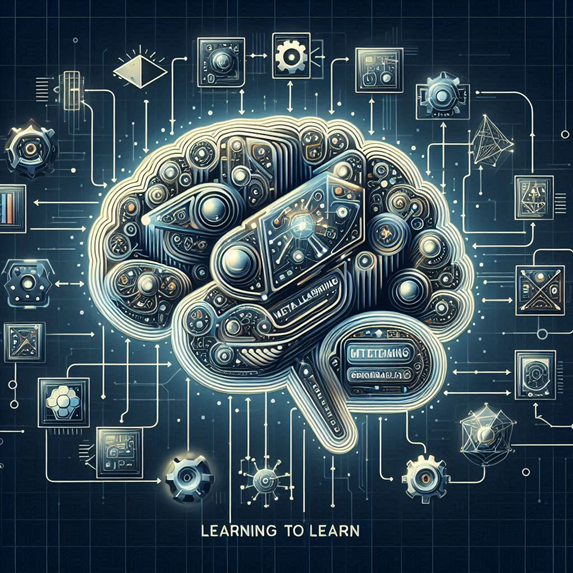
The term meta learning describes the process of learning or teaching a machine how to learn. While in regular machine learning a model is trained to perform a particular task with the help of a tremendous amount of data, in meta-learning, a model learns multiple tasks. This process endows the model with the capability to distil continual features and fundamental principles out of these dissimilar experiences. Hence, the meta-trained model takes less time and a small dataset to perform well on new unseen tasks. Take the example of a child who is cycling for the first time.
They do not begin by learning how to ride every type of bike; they start with overall concepts like balance, steering and pedaling. This works in their advantage because they can apply this knowledge whenever they encounter a new bike, thus enabling them ride it. Meta-learning is a way to enable models to possess a similar capability of learning generic approaches that can be used in different tasks. Because training is performed with a set of very different tasks, the model learns how to isolate key aspects that are important for solving a wide range of problems and which allow it to quickly solve new tasks. This efficiency and flexibility of meta-learning suggest that the approach can thrive in areas where there is little data or computational power available.
Few-Shot Learning:
Few-shot learning is a type of machine learning where the model is trained to work optimally with few examples per category, usually a few. Different from conventional approaches of machine learning that entail the use of large number of data samples with a view of enhancing precision, few-shot learning aims at finding reusable representations from any big, rich source of data. The process starts with training a model on this large dataset in the first place to grab the general characteristics of the dataset. In the model, when it meets a new task, it is adapted using only a few samples, which involve some tag related to the task. What this entails is that, through the use of previous knowledge, the model is easily capable of making correct predictions on new data it initially has not processed. It drastically minimizes the requirements for vast volumes of data and enshrines the ability to learn new tasks very quickly.
Zero-Shot Learning:
Zero-shot learning is even more challenging compared to few-shot learning, and here the model tries to classify the data into categories it was not trained for. The rationale of the thought process is that we should be able to teach the model about classes which it has never encountered. This approach mostly makes use of class attributes or textual descriptions of classes.
Here’s how it works: The model is trained to map these descriptions or attributes to visual features. When it is presented with a new class for which it has no direct examples, the model uses the provided description to generate the corresponding visual features. It then classifies unseen data based on these generated features.
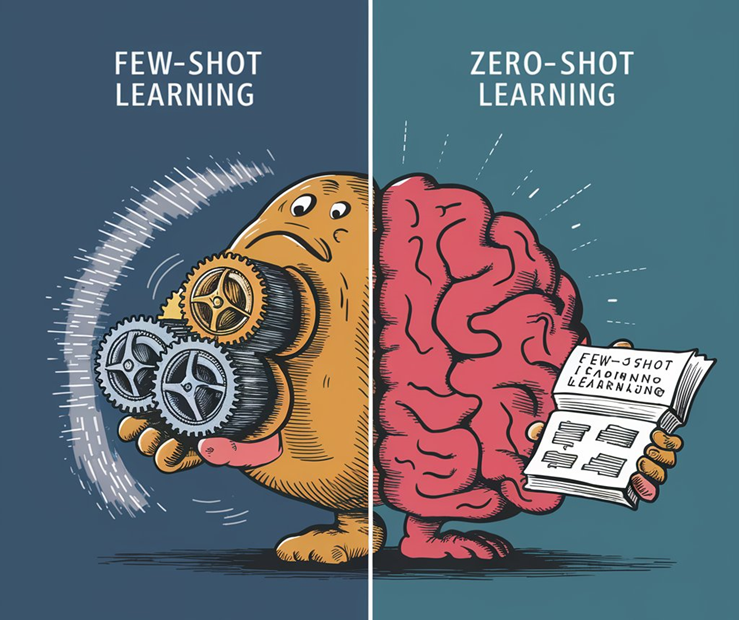
Both few-shot and zero-shot learning are closely tied to meta-learning. The ability to learn from limited data or even without seeing examples is a core competency of meta-learning models.
In essence, few-shot and zero-shot learning actually stretch the limits of machine learning, allowing it to learn from very scarce information. They are immense steps ahead in AI and hold the potential to affect many areas in a big way, such as image recognition and natural language processing.
In robotics and automation, meta-learning substantially boosts a robot's learning from experience and adapting to new tasks and environments. It enables knowledge transfer from one task to another by use of past experiences; hence, it effectively handles novel situations. For example, a robot that is trained to assemble a certain type of object could use the power of meta-learning to adapt to other objects and related tasks quickly. It also enables robots to adapt to new environments—for example, from a factory floor to a warehouse—by employing learned strategies to navigate and work productively in the new environment. Meta-learning enables faster learning, such that robots need minimal re-training to achieve improvement, greatly increasing their flexibility and productivity, and subsequently leading to broad coverage of their effectiveness in applications.
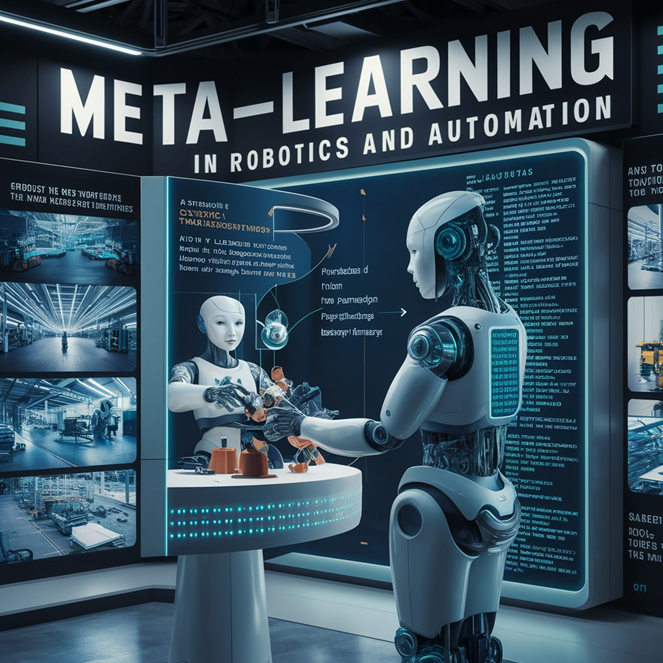
Meta-learning has the potential to make a strong transformation in the healthcare sector by efficiently handling the challenges raised by medical data. Rather, more importantly, compared to traditional machine learning approaches, this is due to the ability of the approach to learn from limited, diversified, and noisy data sets. By nature, meta-learning in healthcare can help overcome issues related to data sparsity and variability, thanks to the extraction of valuable insights from small datasets—a process quite vital in developing diagnostic tools against rare diseases. It generalizes to the diversity of data sources across different populations, regions, and institutions, improving model generalizability and robustness.
For diagnostic accuracy, Meta-learning does this by speeding up the development of models through transfer from tasks a model has already learned. This thus helps in rapidly fielding diagnostic tools. It enhances diagnostic performance in classifying subtle patterns in medical images like X-rays, MRIs, and CT scans that enables early and precise diagnosis. Thus, meta-learning is important in personalized medicine by recognizing patient subgroups, identification of similar characteristics, and prediction of treatment efficiency on every patient for optimized treatment decisions.
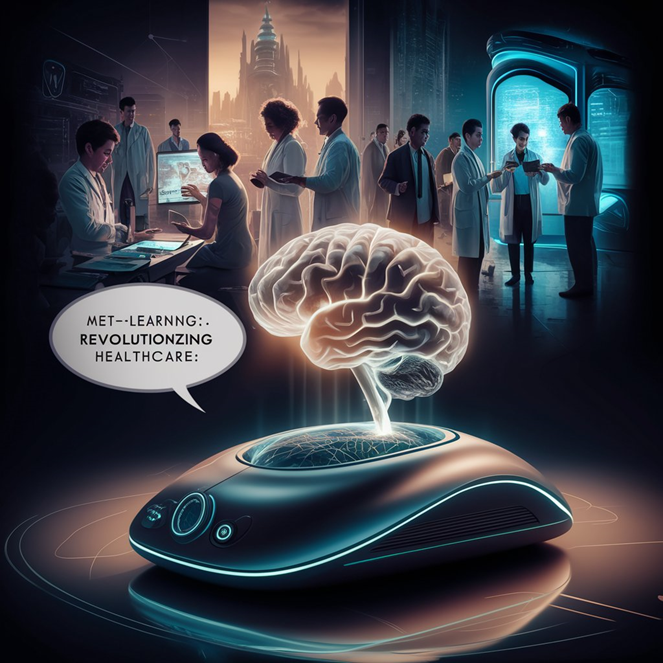
In the fast-changing and heavily regulated financial sector, which is also plagued with ever-present fraud risks, meta-learning offers almost a sure solution to treading through such challenges. It fortifies fraud detection by equipping models with a spate of techniques to adapt quickly to new fraud patterns—fraudsters enhancing their tactics continuously. This adaptability allows the detection of anomalies in an efficient manner since it involves parsing through enormous financial datasets for patterns indicative of fraud, like abnormal credit card spending or transaction volumes. Moreover, transfer learning enables models to transfer experience in detecting fraud from one domain to another, such as credit cards to loans.
In risk management, meta-learning enables dynamic assessment of the risk through adjustments of the models to rapidly changing market conditions—like changes in interest rates, inflation, and geopolitical events. That also supports portfolio optimization by analyzing historic data from markets and economic indicators for tailoring investment strategies against emerging situations in markets and the economy. In addition, meta-learning could provide an early warning system for potential financial crises by learning the occurrence of patterns and forerunners in economic data.
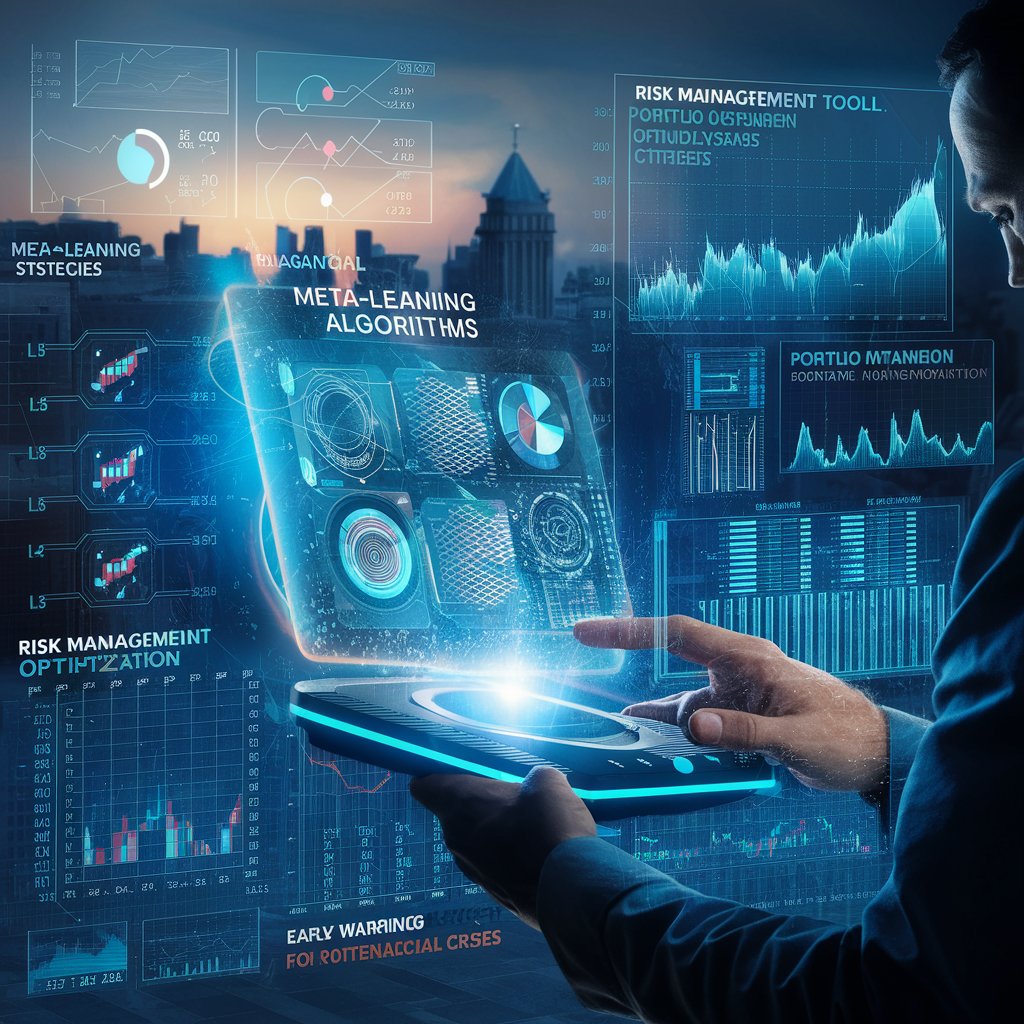
Meta-learning encompasses a variety of approaches to optimize the learning process. Let's delve deeper into three prominent techniques:
MAML is a highly flexible approach in that it tries to find a good initial set of model parameters from which one can adapt to a wide range of tasks with very minor adaptation. Essentially, you are training a model such that the latter acts as a good initialization for any new task. What one is trying to do is find parameters such that, with some minute modification, they perform well over a very large class of problems. This approach is quite beneficial when one has few data for a new task, as it offers fast adaptation.
In contrast, this technique focuses on learning better optimization algorithms rather than modeling. Here, the idea is to learn how to build optimizers that would converge fast enough to provide good solutions for a variety of problems. So, by learning efficient optimization strategies, models will learn more efficiently and faster. This approach is useful particularly for tasks with complex optimization landscapes.
The approach learns the metric of similarity between tasks. Having knowledge of the relationships between the tasks will help in transferring knowledge more effectively. Here, the principal idea is to learn a function that measures distances between tasks so meaningfully as possible. After having that information, adapt the model to new tasks in a way that uses knowledge from similar tasks. Thus, metric-based meta-learning is useful in scenarios where there is a hierarchical structure among tasks or tasks share some latent patterns.
Meta-learning can be recognized as one of the most inspiring breakthroughs in the AI domain, as it holds the potential to add real value to different areas of human endeavor. meta-learning helps make the models more flexible, faster, and more efficient to generalize to new tasks and environments because it opens up the first way of learning how to learn. In robotics and automation, it enhances the carry-over over expertise and knowledge that the robot otherwise would take longer to learn when transferred to a different task or environment. In healthcare, it responds to issues, including the lack of data and their variation, increasing the rate of development of diagnostic equipment and personalizing the treatment. Meta-learning enhances fraud detection, risk management and portfolio optimization in financial services solutions, which are more frequently applied in emerging markets.
Variants such as Model-Agnostic Meta-Learning (MAML), optimization-based meta-learning, and metric-based meta-learning top up this method’s flexibility. MAML has shown promising initialization for array of tasks, while optimization-based approach helps to learn faster and metric learning approach helps to transfer the learning across the tasks. Meta-learning as an approach will keep on developing and given the fact that it holds the potential to solving numerous problems in an efficient and effective manner, meta-learning will, on the same breath, keep on making giant leaps towards positive breakthroughs in various fields, leading to creation of wiser artificial intelligence systems.
Powered by Froala Editor